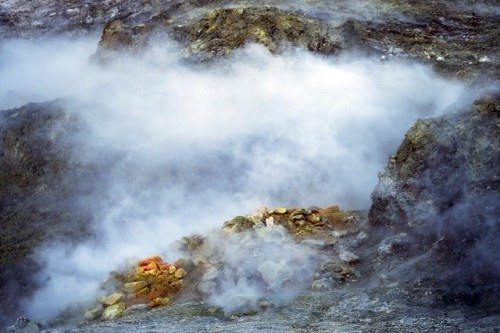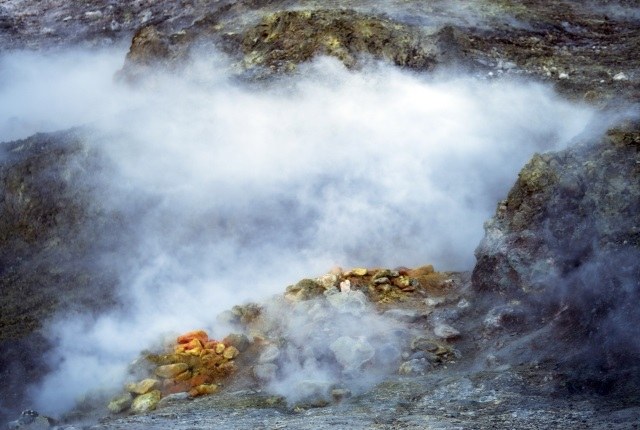Can climate change also affect volcanic activity? One answer comes from a study published in Geophysical Research Letters, which combined the tools of climate science with those of volcanology to analyse the case of the Phlegraean Fields.
The scholars focused on the period between late 2017 and 2018, when rainfall levels were within the normal range, but within a broader framework of widespread drought between 2015 and 2022. The data analysed showed that this period of increased rainfall coincided with a strong reduction in gas emissions from the Pozzuoli Solfatara, the best known volcano and main “vent valve” of the Phlegraean Fields. The increased pressure accumulated between 2017 and 2018 was then released the following year in the form of seismic events.
“The results of our study suggest that frequent and prolonged rainfall occurring within periods of drought contribute to influencing geophysical and geochemical responses related to deep geological processes,” explains Luca De Siena, a Professor at the “Augusto Righi” Department of Physics and Astronomy at the University of Bologna and first author of the study. “Being able to understand these mechanisms could be fundamental for assessing volcanic risk in the context of the Phlegraean Fields and beyond.”
The Phlegraean Fields appears as a prototypical geothermal system, in which fluids at high pressure are pushed upwards and open fractures within surface rock formations. As in all volcanic environments, here too magmatic movements are strongly interconnected with geochemical and environmental aspects. Also, it is well known that, with respect to the environmental factor, high rainfall and tides can transform an already hyper-pressurised system into an enhanced geothermal system.
“During 2017 and 2018, the Phlegraean Fields experienced the most intense and frequent rainfall since 2012, in the midst of a five-year period of severe drought,” continues Professor De Siena. “This phenomenon reduced the permeability of the clays that cover and fill the Pozzuoli Solfatara, reducing the flow of gas to the surface and increasing stress on the geothermal system.”
This accumulated stress was then released in the following months in the form of seismic activity: since 2019, the highest seismic levels and soil deformation rates ever recorded with modern scientific instruments have been observed in the area of the Phlegraean Fields.
“These results suggest that climate change, and in particular increased temperatures and intense rainfall, may be linked to volcanic activity,” De Siena concludes. “Through the tools of climate science and those of volcanology, it is possible to obtain increasingly accurate indications of the possible effects of climatic phenomena on the activity of the geothermal system of the Phlegraean Fields.”
The study was published in Geophysical Research Letters with the title “Geophysical Responses to an Environmentally-Boosted Volcanic Unrest”. Participating for the University of Bologna was Luca De Siena, Professor at the “Augusto Righi” Department of Physics and Astronomy. Also participating were scholars from the University of Salerno and Italy’s National Institute of Geophysics and Volcanology (INGV).


